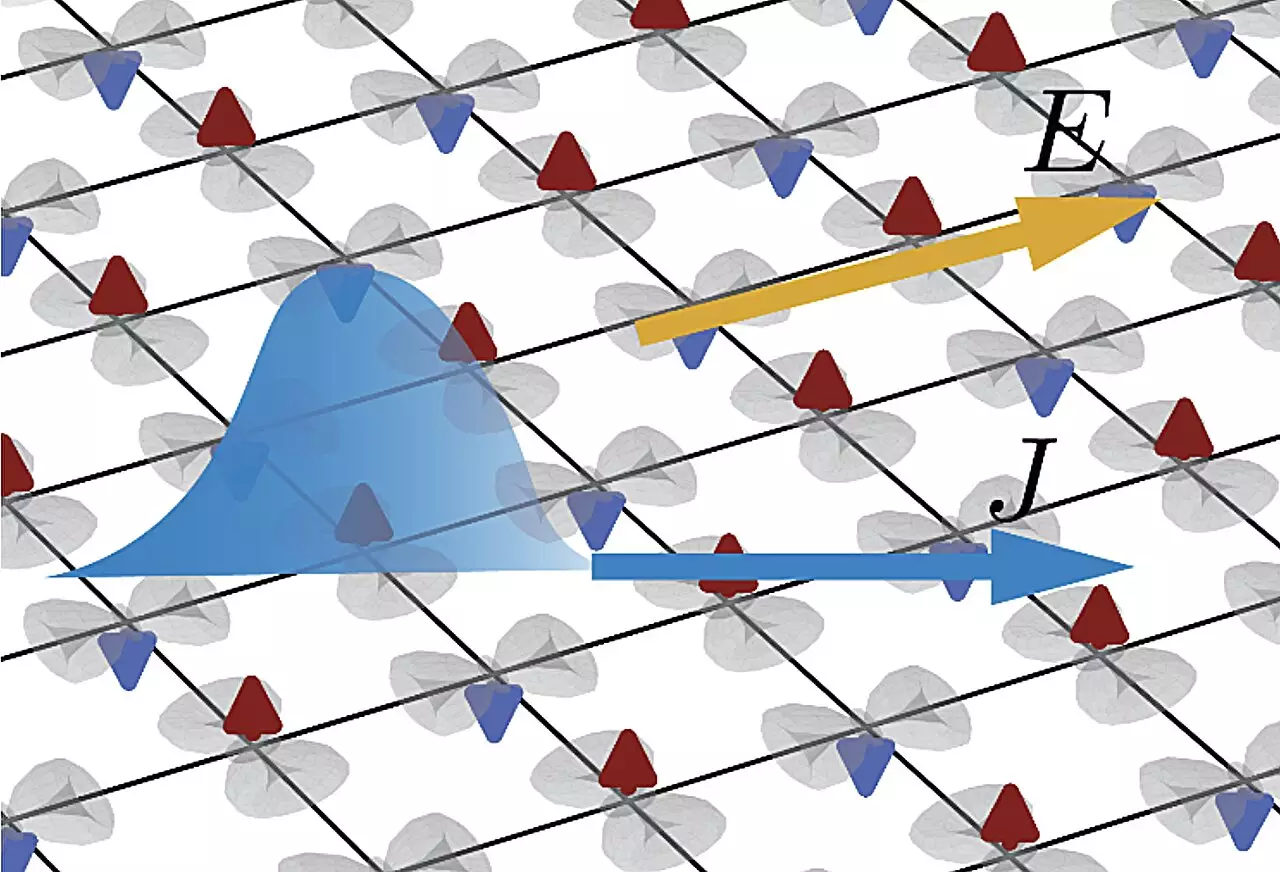The field of condensed matter physics has been invigorated by the recent discovery of a novel class of magnetic materials known as altermagnets. Distinct from both traditional ferromagnets and antiferromagnets, altermagnets showcase a unique magnetic behavior characterized by the dependence of electron spin on momentum. This distinctive feature not only sets altermagnets apart but also positions them as strong contenders for advancing technologies such as spintronics and sophisticated electronic devices. Moreover, their unique properties open avenues for exploring topological materials, which are systems whose electronic attributes are influenced substantially by their geometric arrangement.
Recent investigations led by researchers at Stony Brook University have made strides in understanding the nonlinear response of planar altermagnets. Their groundbreaking study, published in Physical Review Letters, delves into how these materials respond under extreme conditions, as influenced by quantum geometric principles. Co-author Sayed Ali Akbar Ghorashi emphasized the significance of quantum geometry in governing the materials’ behavior, particularly in terms of their second-order response to external electric fields.
One key aspect of altermagnets is the absence of combined parity-time (PT) symmetry, which plays a crucial role in conventional antiferromagnets. In the latter, the Berry curvature—a key descriptor in quantum geometric theory—tends to vanish, thus allowing quantum metrics to exert influence over the nonlinear responses. However, the unique symmetry breaking in altermagnets means they do not follow this trend, raising intriguing questions about how their geometric properties dictate their magnetic responses.
Initially, Ghorashi and his team aimed to clarify the intricacies surrounding the nonlinear responses in altermagnets. Using semiclassical Boltzmann theory, they meticulously examined all possible contributions to the nonlinear responses of these materials, extending their analysis through third-order approximations in electric fields. What emerged was a detailed mapping of the quantum geometric origins of various terms related to scattering times.
Through symmetry considerations for each planar altermagnet, the scientists were able to discern which contributions were significant in both longitudinal and Hall components of the third-order conductivity, a foundational measurement in characterizing magnetic materials.
The results of this work yielded some astonishing insights that challenge previously held assumptions about magnetic response behavior. Notably, due to their inversion symmetry, altermagnets displayed a vanishing second-order response, making them a unique category where the third-order response emerges as the predominant nonlinear characteristic. This revelation is particularly monumental, as the empirical findings suggest that the non-linear effects in these materials are amplified by significant spin-splitting phenomena. Additionally, the weak spin-orbit coupling in altermagnets, when contrasted with the magnetic exchange term, indicates a notable departure from conventional understanding and introduces new dimensions in material characterization.
The implications of these findings stand to reshape both theoretical predictions and experimental approaches in the field of magnetic materials. The research team suggests that the distinctive nonlinear transport characteristics discovered merit further exploration. Future investigations could focus on extending the current study beyond basic relaxation time approximations, specifically by integrating disorder effects—a factor known to influence the physics of PT-symmetric antiferromagnets.
The exciting realm of altermagnets, fueled by their intriguing magnetic properties and potential applications, is poised to capture the interest of a wide range of researchers. As investigations deepen, new experimental methodologies may emerge, offering insights that were previously unattainable. Overall, this new class of magnetic materials not only enriches our understanding of condensed matter physics but might also contribute significantly to future technological advancements.


Leave a Reply